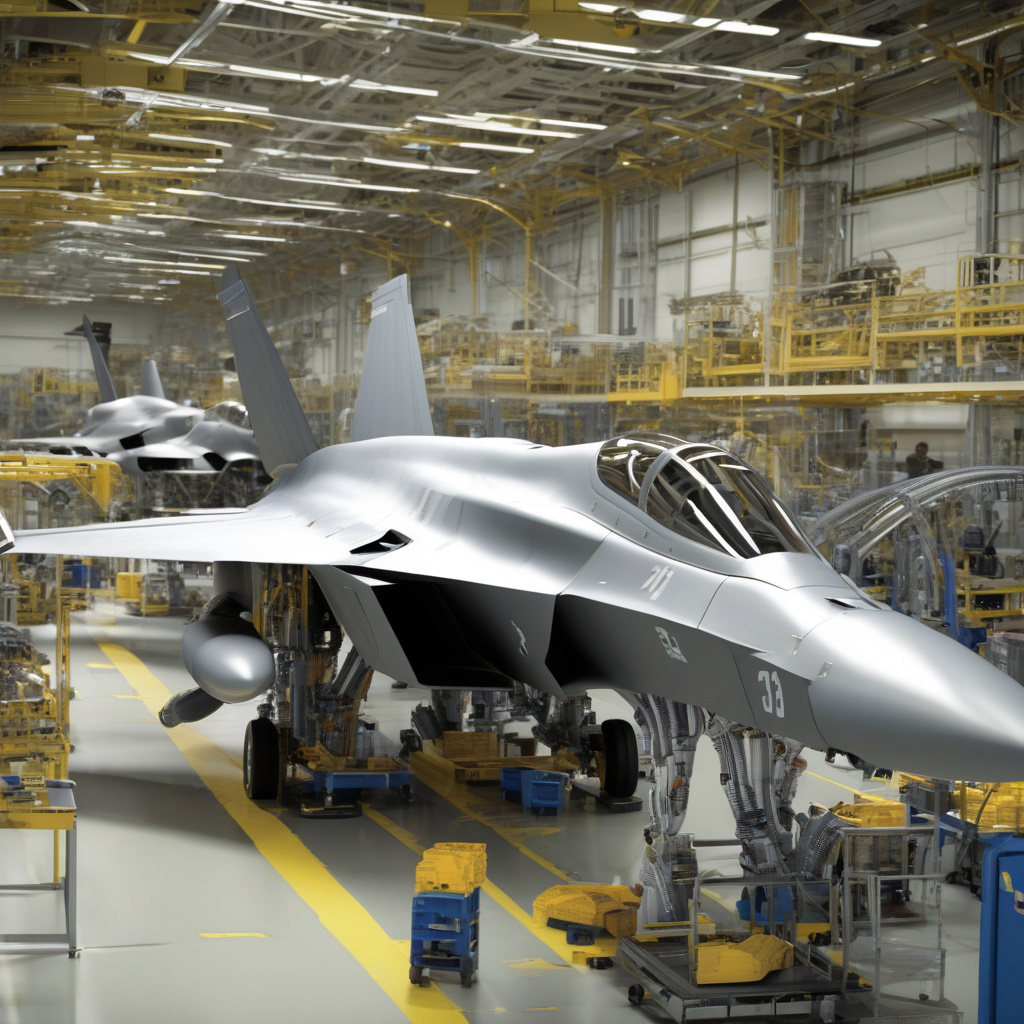Revolutionizing Fighter Jet Manufacturing: The Future of Aerospace Technology Unveiled
An American defense company has revealed that the world’s most advanced fighter jet’s manufacturing could reach unprecedented speeds with the integration of cutting-edge technology. The production of fuselages, a crucial component of fighter jets, can now be completed in a record-breaking timeframe of just 30 hours. This groundbreaking advancement marks a significant leap forward in the aerospace industry, showcasing the power of innovation and automation in streamlining manufacturing processes.
The traditional method of constructing fighter jet fuselages is a labor-intensive and time-consuming process that can take weeks or even months to complete. However, with the implementation of new technologies, including advanced robotics and digital automation, the production time has been dramatically reduced to a mere 30 hours. This remarkable achievement not only accelerates the manufacturing process but also enhances the overall efficiency and precision of fuselage construction.
One of the key technologies driving this rapid transformation is the use of automated robotic systems that are capable of performing complex tasks with speed and accuracy. These robots are equipped with advanced sensors and programming algorithms that enable them to work seamlessly alongside human operators, significantly increasing productivity and quality control. By harnessing the power of automation, manufacturers can now produce fighter jet fuselages at a pace never before thought possible.
In addition to robotics, digital automation plays a crucial role in streamlining the manufacturing process of fighter jet fuselages. By utilizing sophisticated software systems and data analytics, manufacturers can optimize production workflows, identify potential bottlenecks, and make real-time adjustments to improve efficiency. This digital integration not only speeds up the manufacturing process but also ensures a higher level of precision and consistency in the final product.
The implications of this technological advancement extend far beyond just faster production times. By revolutionizing the manufacturing process of fighter jet fuselages, aerospace companies can enhance their competitiveness in the global market, reduce production costs, and meet the growing demand for advanced military aircraft. This newfound efficiency also opens up opportunities for innovation in design and engineering, allowing for the development of next-generation fighter jets that are lighter, faster, and more agile than ever before.
Moreover, the integration of advanced technologies in fighter jet manufacturing underscores the relentless pursuit of excellence and advancement in the aerospace industry. As companies continue to push the boundaries of what is possible, we can expect to see even more groundbreaking innovations that will shape the future of aviation and defense. The era of rapid fuselage production is just the beginning of a new chapter in aerospace technology, where possibilities are limitless, and the sky is no longer the limit.
In conclusion, the revelation that the world’s most advanced fighter jet fuselages can now be manufactured in just 30 hours highlights the transformative power of technology in the aerospace industry. By leveraging robotics, digital automation, and innovation, manufacturers are paving the way for a future where speed, efficiency, and precision redefine the standards of aircraft production. As we witness this unprecedented evolution in fighter jet manufacturing, one thing is clear – the future of aerospace technology has arrived, and it is nothing short of extraordinary.
fighter jet, aerospace, technology, innovation, automation












